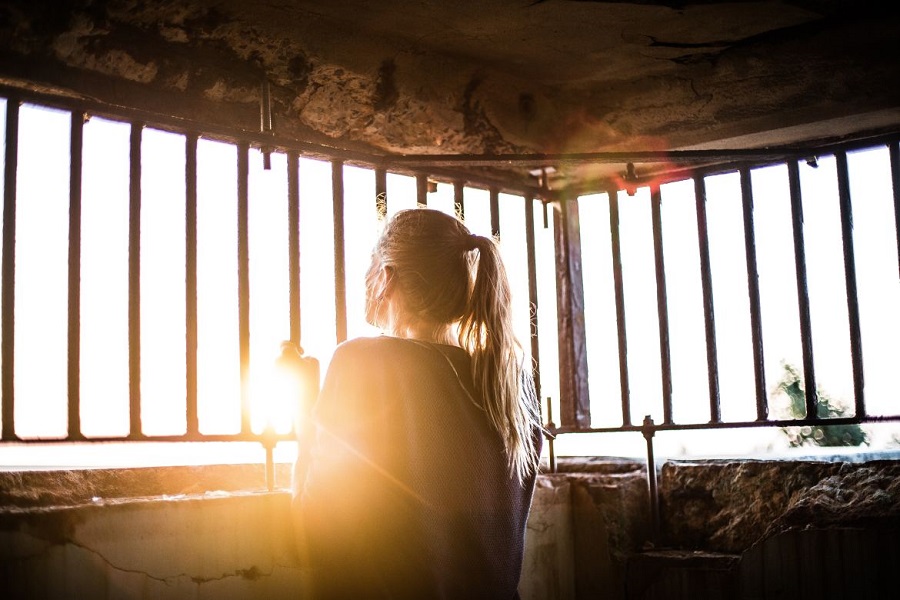Mold can be toxic and harmful to anyone, but it can quickly compound to be detrimental for those with prolonged exposures, genetic predispositions, or already with compromised immune systems. Buildings can become water-damaged and moldy for countless reasons – slow leaks/drips, poor ventilation, cracks in the foundation, flooding, not enough caulking, etc. When a building is compromised by one or more of these cases, mold can quickly and easily begin to grow and create havoc.
Trust your gut
If you suddenly begin feeling tired, have blurred vision, a headache, red or itchy eyes, or start forgetting words or coughing after changing buildings or air quality, trust your gut and leave as soon as possible. Symptoms from a mold exposure can greatly vary from person to person, so best thing you can do is understand the potential symptoms and then pay attention to your body. You can’t always see mold, but your body will let you know. If you were out running errands or socializing, make a mental or physical note of the location and either actively avoid it going forward or make an informed and prepared decision about returning.
Take binders
Mycotoxins, toxic substances/chemicals created by various species of mold, can cause short and long-term damage on the body if they are not fully removed from the system. If you have been in a prolonged exposure, consistently taking a variety of binders (different binders grab different mycotoxins) is recommended. However, once you realize you’ve been in a moldy environment, take a binder as soon as possible. A few of Newbridge’s recommended binders include activated charcoal, zeolite, chlorella, clays (bentonite, montmorillonite), and diatomaceous earth.
If you are especially susceptible and know you might be returning to a water-damaged building, make sure you always have at least one binder with you. Like most binders, try to time it to be two hours after food/supplements and one hour prior to food/supplements. However, again, trust your intuition and if you think your body needs the binder immediately, then take it.
Contain and shower
As soon as you get home, contain anything that was with you during the exposure and take a shower. Use a plastic bin that snaps down to contain any potential mold spores and/or mycotoxins that are on your clothes, bags, etc. Keep everything stored away until you have a chance to properly wash and clean it. If you are particularly sensitive, you risk smaller yet repeat exposures every time you interact with the item if it was not contained and cleaned, especially if it is porous (more to come on cleaning).
After you’ve contained everything, shower off – washing both your hair and body. If you are able to find non-toxic hygiene products that have activated charcoal, this is an extra step you can take in decontaminating. If you can’t shower right away, minimally wash your face. Also, if you have glasses, wash them with either soap or disinfectant wipes. It may seem trivial and small, but showering and washing your face really can make a huge difference, especially if you get fatigued from an exposure. Either way, it doesn’t hurt to keep a pack of disposable facial wipes and/or disinfectant wipes in your car for when you won’t be going home soon to clean off.
Clean and decontaminate possessions
Of course, air filters are important in creating a healthy and healing environment, but there are also other steps you can take to keep your possessions clean as well, especially if they were with you during a short-term mold exposure. As previously mentioned, contain them in a sealed plastic bin until they can be cleaned. For clothes, put between ½ a cup to two cups of Borax in with the laundry as well as vinegar (instead of laundry softener) – make sure the water is warm/hot otherwise the Borax will not dissolve. For items with lots ridges, cracks, or holes, try using canned air (pointed away from you) outside to blow any particles out.
Lastly, for any items you have (hard surface, porous, textured, etc), you can spray them with EM-1 to help remove any remaining mycotoxins. EM-1 stands for Effective Microorganisms and is a blend of beneficial microorganisms that can help neutralize mycotoxins. Plus, if it is nice outside, the sun and wind are wonderful free resources for decontaminating too.
A few final tips…
- Nasal sprays, such as Argentyn 23 which contains silver, can help clean your airway and fight against bacteria and fungi.
- Using a travel essential oil diffuser in your car can help post-exposure as well for energy levels. Consider trying peppermint (for focus), eucalyptus (for respiratory support), or anything citrus (for fighting fatigue).
- If you aren’t going to wash your hair every day, swap out your pillow cases more frequently. Fabric is a porous material and can pick up any lingering mycotoxins. You don’t want yesterday’s toxins affecting today’s sleep.
If you want to further discuss the potential of mold biotoxin illness with your Newbridge provider, schedule an appointment or join a class!


